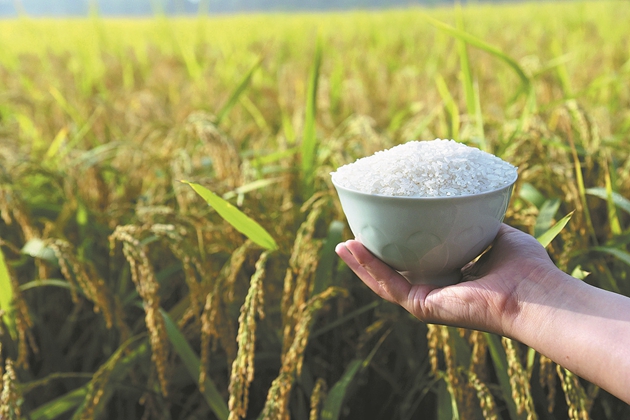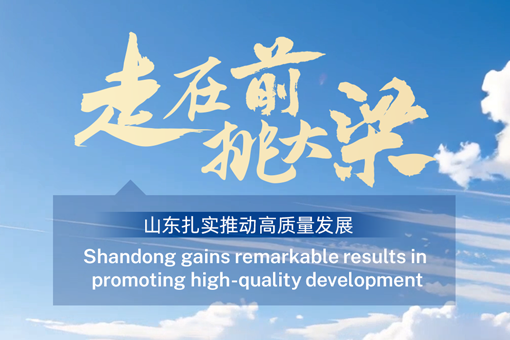Seeds of hope spring from seawater rice
By ZHANG ZHOUXIANG and JIAO JIE| (China Daily)| Updated : 2023-03-08
Print Print
Rice plants and a bowl of rice are pictured at the Qingdao Saline-Alkali Tolerant Rice Research and Development Center, Shandong province, in September 2017. [Photo provided to China Daily]
Increased output
Salt-tolerant rice can grow in saline soil with water containing 0.6 percent salt, which covers a relatively high percentage of China's saline soil, thus increasing the nation's rice production.
Zhang Guodong, vice-director of the Qingdao research center, said, "Quite a high proportion of saline soil in China has a salt content of more than 0.6 percent, but by watering the rice plants, we keep the salt content in water surrounding their roots at around that level, thus helping them grow well."
In 1930, it was discovered in Ceylon — now Sri Lanka — that wild rice could grow in saline soil, marking the start of research in this field.
In comparison, such research in China did not begin until the 1980s, when Chen Risheng, an agricultural scientist in Zhanjiang city, Guangdong province, found that some rice plants could grow on the coast in this area.
Chen collected more than 500 seeds and grew them on an area of local wetland. After five years, he harvested 3.8 kg of seeds that had grown steadily — naming the crop Sea Rice 86 to mark the year in which he made the discovery.
After decades of research, China took the lead globally in seawater rice research thanks to the late academician Yuan Longping, known as the "father of hybrid rice", and his team.
Zhang said, "Seawater rice breeding is part of hybrid rice breeding, in which China has long been the undisputed champion of the world." In 2012, Yuan and Chen set up a team to research seawater rice. By 2016, Yuan had coordinated national resources and founded the Qingdao Saline-Alkali Tolerant Seawater Rice Research and Development Center.
Yuan set three goals for the pair: Seawater rice must be able to withstand water with a salt content of 0.6 percent or more, thus saving water resources; to be economically sustainable; the yield must reach 300 kg per 0.67 hectares; and the total plantation area should be more than 6.67 million hectares for planting seawater rice to be a sustainable industry in China.

 Xi's Moments
Xi's Moments  Shandong gains remarkable results in promoting high-quality development
Shandong gains remarkable results in promoting high-quality development  2025 National Two Sessions
2025 National Two Sessions